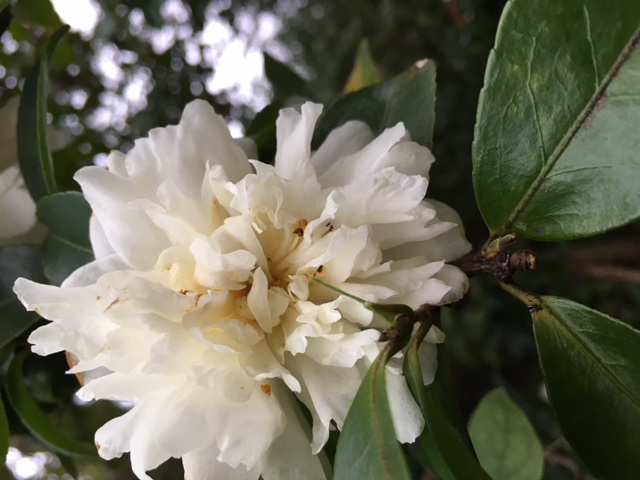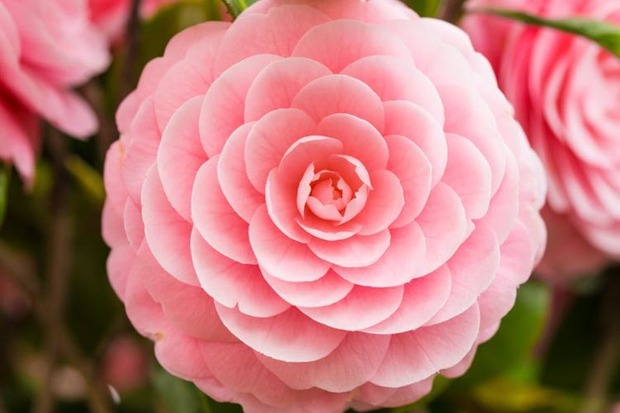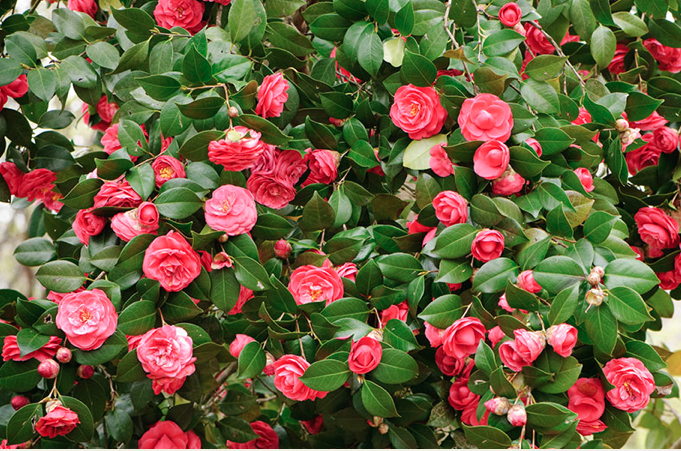Plants in winter gardens are usually not show stoppers – with one great exception. Camellias, with their dark green shiny leaves and blossoms so stunningly beautiful they will melt your heart, are the queen of the garden during these cold, dreary months of winter.

We’re not alone in revering this cold weather wonder. In its native Japan, Camellia japonica (by far the most common of our ornamental camellias) grew on the grounds of Shinto temples. It was believed that the gods themselves made the shrubs bloom.
The Japanese name of this shrub is tsubaki which is translated as “tree with shining leaves,” an apt name for this evergreen shrub. In its native habitat (Japan, Taiwan and the coast of Korea) this Camellia can grow up to 30 feet tall and generally has simple red flowers with 5 – 6 petals.

But gardeners, being of the meddling sort, could not leave well enough alone and today there are an astonishing 20,000 named cultivars of camellias, sporting a wide variety of flower forms and colors, including white and all shades of red and pink. Flowers can be ruffled, spotted, striped, speckled and all other manner of pattern and design.
Although Camellias are cold tolerant, they do have their limits and grow best in southern climates (zones 7 – 10) where winter temperatures do not generally get below zero. New, hardier varieties have been recently developed for more northern gardens.
Camellias prefer morning sun and afternoon shade and rich, well drained slightly acidic soils. Once established, they are relatively drought tolerant, needing less water than lawn grass.

These shrubs would be beautiful any time of year but now, when so much of the garden is brown and bare, they are particularly beloved and appreciated.
